I remember the first time I saw Irad Ortiz, Jr., when he wasn’t on the back of a horse. It was opening weekend of the 2011 Saratoga Race Course meet, and the New York Race Track Chaplaincy was holding a fundraiser at the Saratoga Strike Zone on Ballston Avenue. Irad was there with his agent at the time, not so much to show off his bowling skills, but to show his face and support the cause, just two months after he’d begun riding in New York. He looked impossibly small and young; he was 18 years old, and any bouncer on Caroline Street would’ve laughed if he’d attempted entry at a local watering hole. He was quiet, too; not entirely comfortable speaking English, the Puerto Rico native was respectful and amiable, communicating often with the warmth of a smile that’s no less genuine today, as he’s at the top of the New York jockey colony, than it was then, when he was an apprentice, or, as it’s known around the track, a bug. Ortiz had made his New York debut earlier that year at Aqueduct Racetrack on April 22, finishing fifth on a horse named Straddler in a low-level claiming race. He then returned to riding at Hipódromo Camarero in Canóvanas, Puerto Rico, before coming back to New York in May to ride full-time at Belmont Park. At first, he rode only a few races a day—sometimes just a single one—but it didn’t take him long to get his first win: That came on May 18, 2011, four days after he set up shop there, on his fourth mount, Grande Roja.
By the following spring, José Ortiz had followed his older brother—José’s 14 months younger—north from Puerto Rico, arriving at the end of the Aqueduct winter meet. He won with his first mount in North America, Corofin, on March 21 there. Thus began the brotherly rivalry. Since then, the brothers have racked up a combined 3500 wins, 22 riding titles, 2 Belmont Stakes wins and 5 Breeders’ Cup victories, along with spotless reputations. At ages 24 and 25, the Ortizes are poised to inherit the mantle of Hall of Fame riders such as Angel Cordero, Jr. and John Velazquez. So why doesn’t anybody outside the Thoroughbred racing niche know their names?
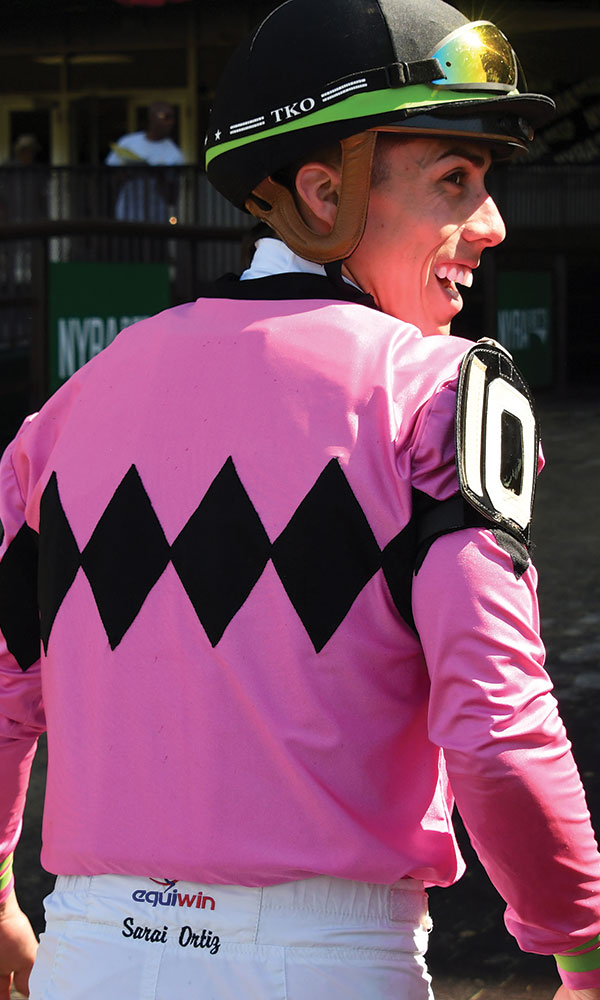
They should be a marketer’s dream come true. They’re brothers who’ve come to the US to fulfill the American Dream, succeeding by dint of an unbeatable trifecta of character, effort and talent. It’s impossible to find anyone on the New York backstretches who has a bad word to say about them. They’re family men, close to their parents, with long-term partners and soon, each will have a couple of kids (Taylor Rice, also a jockey and José’s wife, is expecting their second child later this year). Irad met his partner, Meliza Betancourt, seven years ago while he was in jockey school in Puerto Rico, making them the racetrack equivalent of high school sweethearts. They have two daughters.
Ordinarily, jockeys begin their careers on lower-level tracks, where they’re more likely to get rides and the experience and education that comes with them. Irad came straight to New York, and, predictably, family played a major role in that. His grandfather, who, like one of their uncles, was also a jockey, worked the New York tracks. So, Irad came to where he had family. Now the Ortizes’ parents are both here, their father working in one of the barns at Belmont. Perhaps as a direct result of their success, most of José and Irad’s family are on the US mainland with them and were, fortunately, largely unaffected when Hurricane Maria hit last fall. Of a recent visit to their native island, Irad said, soberly, “It was very different after the hurricane. The trees—they were all down. It was really sad.”
When Serena and Venus Williams play each other, no matter the stature of the tournament, it’s a major tennis event. When Peyton and Eli Manning faced off on the football field, the interfamily rivalry was the main media story. Consider, then, how often the Ortiz brothers head into the starting gate for the same race—and how little the national spotlight is trained on them. For example, on the day of the Belmont Stakes—the biggest day in New York racing and one with the added bonus of a Triple Crown potentially falling—both had mounts in 9 of the 13 races on the card. Irad got bragging rights that day, with two wins; José had to settle for a trio of second-place finishes, including a stunning one in the Belmont Stakes aboard Gronkowski, who nearly beat out eventual Triple Crown winner Justify. His brother finished right behind him in third place on Hofburg. As of mid-June, the brothers are also neck and neck in the national jockeys’ standings, with José just getting the better of his brother, leading by less than $1 million in purse earnings. They are, in more ways than one, inseparable.
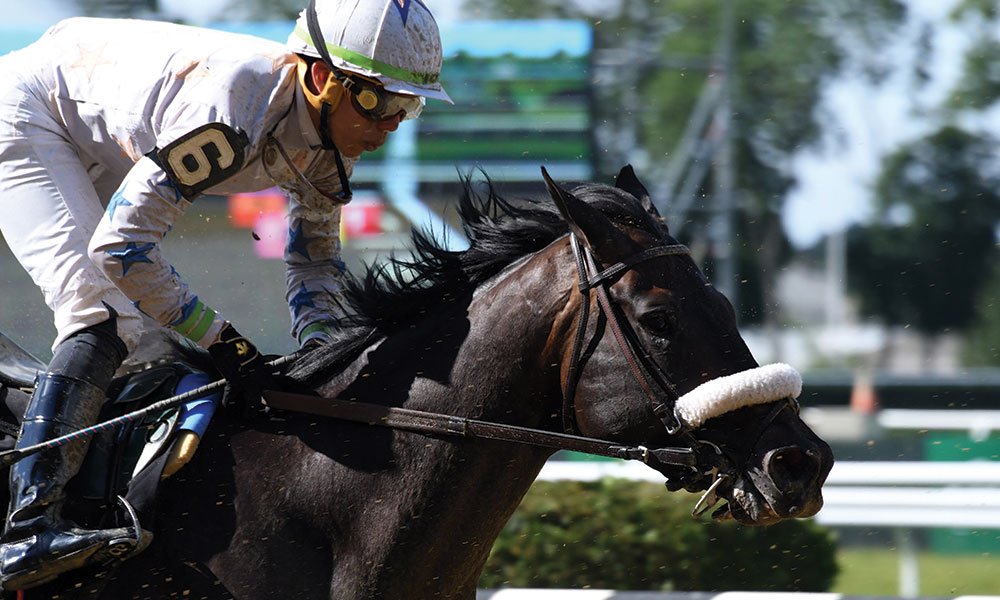
Part of the story of the Ortiz brothers is that, rather like Serena and Venus, the younger sibling has—pardon the pun—eclipsed the elder one. In 2016, José led all North American jockeys in wins with 1563; his brother was right behind him with 1504. In 2017, José won the Eclipse Award for Outstanding Jockey, and he acknowledged that he and his brother have been known to get into arguments after they’ve raced against each other. “Nothing serious,” José said with a smile. “Right now, he’s No.1 in New York. I want to win and I don’t want to be mad when he wins. I’m really proud of him. I want him to win the Eclipse Award this year.” Then he corrects himself—sort of. “I want to win it, but I want him to be in the mix,” he says. “I’m really proud and happy for him.”
José’s used to being interviewed, and saying the right thing to the media is part of the early training of any elite athlete, but it’s nearly impossible to be cynical around either brother. Talking about the highlights of his career, José talks frankly about this year’s Preakness, after which trainer Chad Brown spoke heatedly, openly critical of José’s ride on fourth-place finisher Good Magic. “I wish I could take that back,” says José, more than a touch of the politic in his comment, given that his immediate post-race remarks suggested that the horse hadn’t run to expectations. “I didn’t want to be where I was. It wasn’t the plan.” He does acknowledge Brown’s criticism, though. “It’s hard when trainers criticize, but we understand,” he says. “They work as hard as we do, and they want to win, and [running on the lead] wasn’t the plan. I’m still riding for him, and that means a lot to me. Turn the page and keep going.”
Brown—whose name at this time of year is unfailingly followed by, “from nearby Mechanicville”—was also responsible for putting Irad on one of the best horses he’s ever ridden, the champion Lady Eli. As obstreperous as she is talented, she didn’t need a jockey to coax the best out of her. “She needed to be calm and collected, to have someone that she trusted on her back,” says Brown. “I thought she and Irad would be a good match.” And he was right: Irad was in the saddle for all 14 of her lifetime races, resulting in 10 wins and 3 runner-up finishes. It’s also clear that Brown has mutual respect for the Ortiz brothers and what they’re accomplishing in horse racing. “They have a great appreciation for the horse, no matter what level it is,” says Brown. “They pet the horses, they try to get constructive feedback, they take their time bringing the horses back after a race. They put a lot of effort into trying to get along with a horse. They’re real horsemen.”
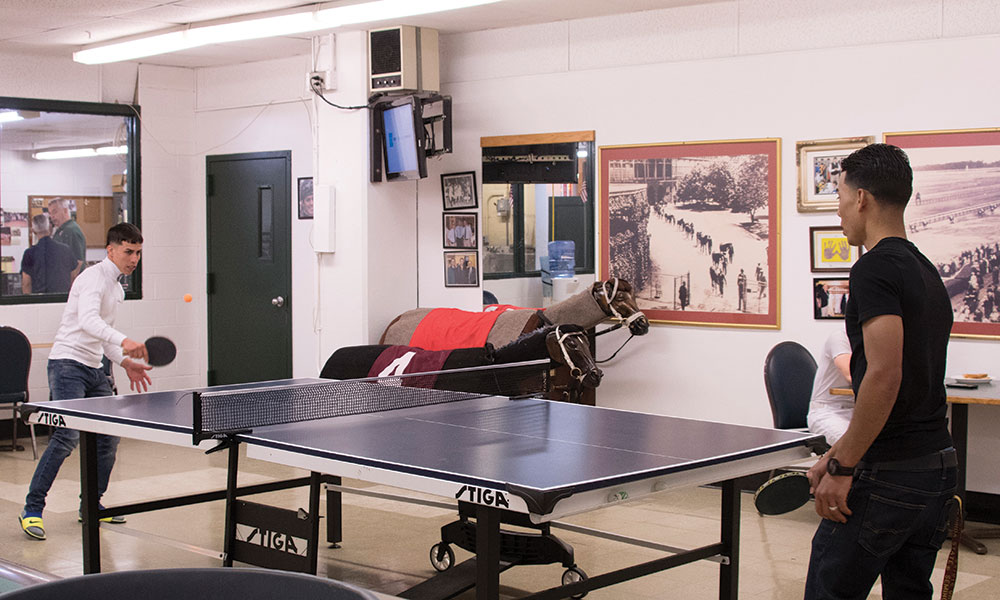
With the Belmont Stakes behind them, the Ortizes are looking ahead to Saratoga, where the pace both on and off the track accelerates, and where the demands on their time increase significantly. At Belmont, they ride five days a week; at Saratoga, it’s six, and the brothers seldom get a morning off. While during the spring and early summer, they might head to Belmont a couple of mornings a week, at Saratoga they’re out every morning except Tuesday (dark day at the track)—and sometimes even that day too. They’re familiar faces on the backstretch, hanging out and driving around in golf carts, with or without their agents.
Last summer, José’s daughter, Leilani, was an infant, adding a whole other dimension to the always-demanding summer meet. “It was a little rough in the beginning,” he says. “She woke up a lot, and even though Taylor was the one feeding her, I still woke up when I heard the baby. And the mornings are so busy—you hardly ever get both a Tuesday morning and afternoon off. There are so many horses up there, and trainers need us.” Like any successful athlete, José is aware of his body’s limitations—and what he needs to do to power through. “I’m human, I get tired,” he says. “It’s such a short meet, but you have to be on your toes. You can’t give anyone else an advantage. I’ve been the leading rider two years in a row, and I want to keep that title.”
His brother might have something to say about that. “I want to win the standings again,” says Irad. “That’s the goal.” He points to famous jockeys, such as Cordero, Jr., Velazquez and Edgar Prado, as the riders he’s learned the most from; Cordero won 14 Saratoga titles, Velazquez 5 and Prado 1. When José joined him in New York, he passed on what he sees now as his limited wisdom. “I got here a year before José, so I had some experience,” Irad says. “Now, looking back, I know I was way behind. But we both learned more and more, and now I don’t have to teach him anything.” José begs to differ. “I learned everything I know from him,” he says. “If it weren’t for him, I wouldn’t be here. I was always chasing him, and I wanted to be just like him. Now we’re about even.”
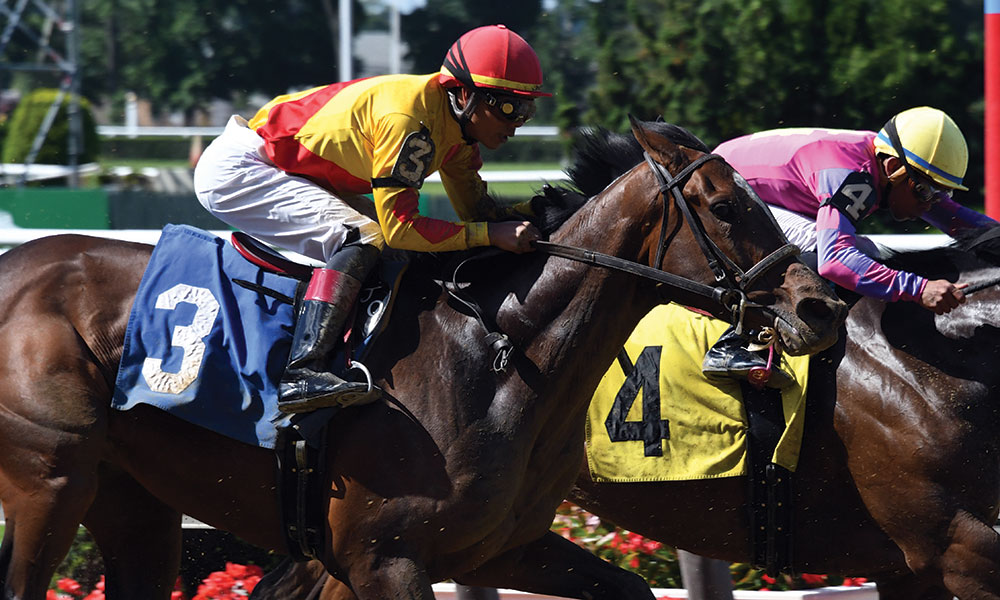
Another trainer who has a history with, and mounds of respect for, the Ortiz brothers is seven-time Eclipse winner for Outstanding Trainer Todd Pletcher, who’s wreaked havoc at Saratoga, having won 13 titles there (including runs from 2002-06 and 2010-15). “They’re both willing to listen and trying to improve all the time,” says Pletcher, on whose horse Tapwrit José won the 2017 Belmont Stakes. “They’re assets to the business.”
In addition to the tough schedule on the racetrack, jockeys at Saratoga are also in high demand for the season’s many charity events, many of which support jockeys and other backstretch employees. One annual highlight is the jockeys versus trainers basketball game to benefit the New York Racetrack Chaplaincy, and while the Ortiz brothers might be small, they’re quick and have serious game. “I like to play,” says José. “I learned in Puerto Rico. I had knee surgery in December, so I don’t know if I can play as hard this year.” (That sound you just heard? The trainers’ collective sigh of relief.)
If it’s not entirely obvious at this point, the Ortiz brothers are top-level riders. They’re attentive fathers, loving partners, mature and professional. They love horses. They’re selfless and generous with their time. They don’t let their professional rivalry get in the way of their family relationship. The Ortizes share every trait that the Williams sisters or Manning brothers have throughout their career in the white-hot spotlight of the sports world. Pletcher says: “They’re not up-and-coming; it’s no secret that they’ve arrived.”
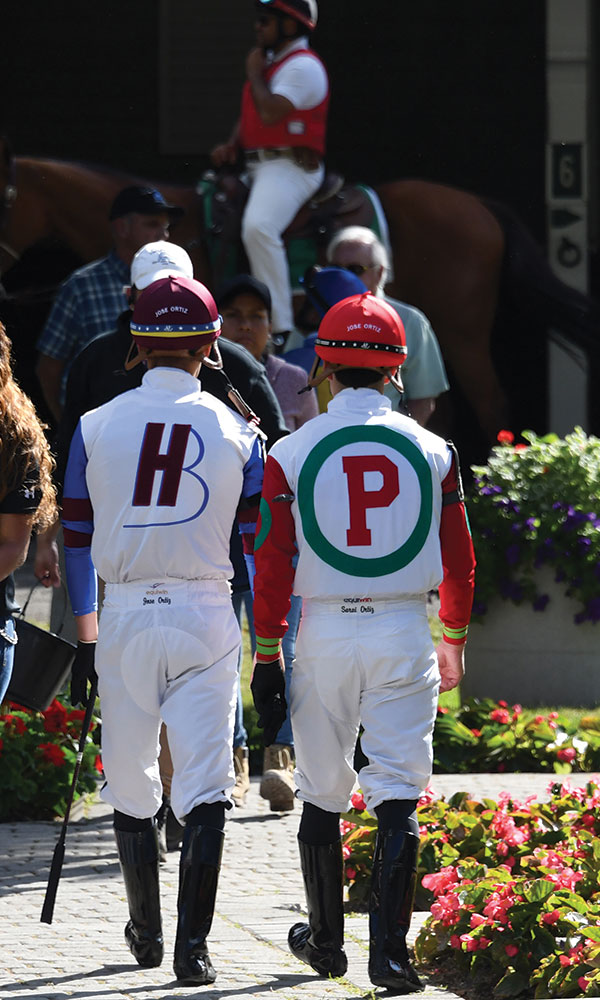
It’s no big secret within the racing community, for sure. But even those of us who love horse racing have to admit that it’s a small community, that our biggest stars could walk down Broadway in Manhattan—or even along Broadway on a busy summer night in Saratoga—with no concern about being recognized. Whether you’re the Oritz brothers or a Hall of Fame jockey, racing just never hit the American mainstream like baseball or football—or even tennis.
Fifteen years ago, jockey Gary Stevens made his movie debut in Seabiscuit, becoming one of the very few racing figures to achieve household name status as a result of the movie’s popularity and Oscar buzz; he also starred in the short-lived HBO series Luck. But he’s an anomaly in this great sport of racing. That said, the prevalence of Latino jockeys like the Ortiz brothers and the prevalence of Hispanic workers on the backstretch creates a stark contrast with the rest of the sport. Spanish is ubiquitous on the backstretch, but not so much in clubhouses and advertising. If José and Irad were athletes in a more popular sport—say, baseball or football—we’d likely see them featured more prominently in advertising. Their rivalry would be emphasized and encouraged. Their senses of humor and love of family and kindness to animals would be part of more national broadcasts. While the Ortiz brothers were the focus of a major feature in The New Yorker late last year, you’ll be hard-pressed to find any other national media outlets—with the exception of those that have a racing focus—covering the Ortiz brothers’ successes in any demonstrable way.
Look, here’s the bottom line: I can think of no better exemplars of sport and character than Irad and José Ortiz. Still in their mid-twenties, the talented brothers figure to be around for at least a couple more decades, giving the rest of the world plenty of time to discover them. I sure hope they do, because they’re both something truly special and, yes, the very embodiment of that still elusive American Dream.


